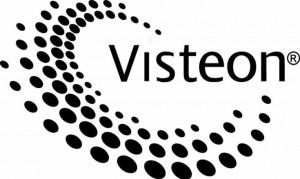
Ford's former partsmaking operations, Visteon Corp., had repeatedly dodged the hangman's noose, but it's finally facing Chapter 11 reorganization.
After a series of narrow, 11th hour escapes, the clock finally struck for long-troubled auto supplier Visteon Corp., this morning, the company announcing it is filing for Chapter 11 bankruptcy protection.
The one-time Ford partsmaking operation has been in trouble almost since its birth, in late 2000, and has depended on a series of handouts and concessions from its former parent to avoid a financial collapse up until this point. Indeed, it was only through meeting a last-minute deadline to cover interest on its vast debt, barely a month ago, that Visteon was able to remain solvent.
But the company says that the current, deep automotive sales slump, compounded by planned summer production shutdowns, simply made it impossible to keep going without a court-protected reorganization.
 “During the reorganization period, we will seek to address our capital structure and legacy costs that are not sustainable given the current economic environment,” said Visteon Chairman and CEO Donald J. Stebbins, in a prepared statement.
“During the reorganization period, we will seek to address our capital structure and legacy costs that are not sustainable given the current economic environment,” said Visteon Chairman and CEO Donald J. Stebbins, in a prepared statement.
The supplier’s British subsidiary, Visteon UK Ltd., already filed for bankruptcy, last month, closing three plants, in the process. The corporate filing is taking place in U.S. Bankruptcy Court, in Delaware.
It’s not clear, yet, if the move will force any immediate reductions in Visteon’s U.S. workforce, or the closing of any of its American plants, but the supplier said it hopes to fund continuing operations through the cash it currently has on hand, and among other things, through the limited cash flow from sales to the auto industry. Lawyers for Visteon immediately sought court approval to keep its operations going, which would require paying its own suppliers and employees.
The firm, based in the Detroit suburb of Van Buren Township, had about $4 billion in liabilities, and $4.6 billion in assets, as of the end of the first quarter. Total cash and liquid assets come to just $625 million.
Ford loosely modeled Visteon after Delphi Corp., the former General Motors parts operation that also was spun off around the turn of the millennium. The two companies recognized that they could no longer pay assembly line wages for parts manufacturing operations, at least not when U.S. competitors were spending as little as a quarter as much for labor. And importers were paying significantly less again.
But the plans never worked out quite as anticipated, in part due to strictures that continued to tie Visteon to Ford. Among other things, that limited the supplier’s ability to cut wages and, in turn, that made it difficult to generate new business beyond Ford’s contracts – which still accounted for 31% of Visteon’s first-quarter 2009 revenues.
How long the Michigan mega-supplier might remain under court protection is unclear. Delphi has spent several years trying to line up the finances it needs to emerge from its own bankruptcy, even after getting court approval for massive pay and job cuts.
Turning to Chapter 11 protection is becoming a way of life in the U.S. auto industry. Over the last several years, scores of suppliers large and small have gone into court, though some, like Plastech, have failed to emerge. The biggest bankruptcy, to date, is that of Chrysler LLC, which filed at the end of April after bondholders refused to accept a proposed debt-for-equity swap.
The same problem faces GM, which saw bondholders overwhelmingly reject its own equity offer, this week, which would have given them 10% of the company. The automaker is expected to file Chapter 11 by June 1st, the deadline given by the Obama Administration to complete a reorganization on its own.
If the court ultimately approves the automaker’s survival plan, the federal government would own 70% of the “new” GM, with the United Auto Workers Union gaining a 19% stake in return for reducing the automaker’s planned cash contribution to an employee health care fund. Bondholders would get 10% and existing shareholders would receive what little was left.
